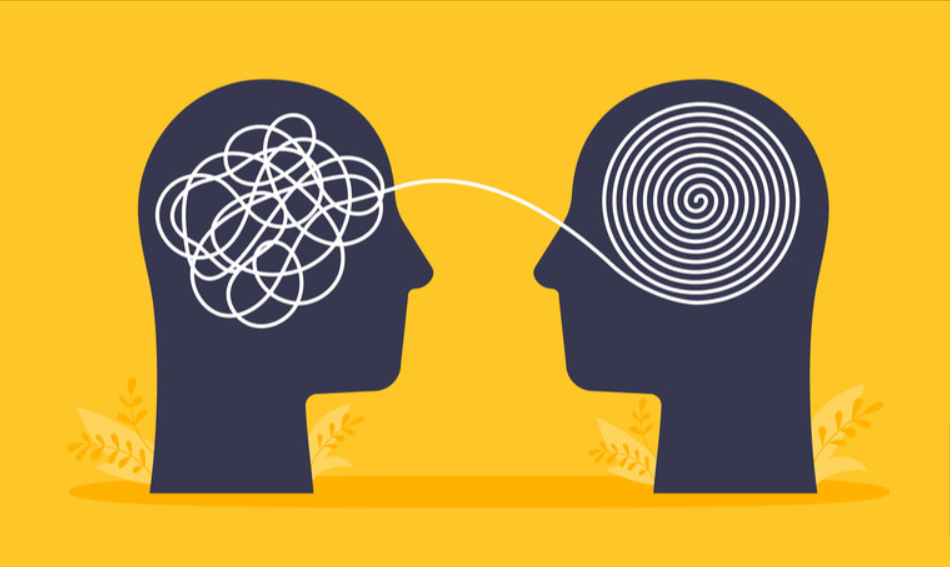Yoga is the cessation of the movements of the mind.
योग: चित्त-वृत्ति निरोध: (In Sanskrit ) ~ Patanjali Yoga Sutra 1.2
Yogaschitta vritti Nirodha
Maharishi Patanjali, the author of a famous yogic text ‘Yoga Sutra’ describes the whole purpose of yoga in just 3 words. Chitta or the mind stuff is constantly undergoing changes. These changes or fluctuations create thoughts, emotions leading to actions. Thus the purpose of yoga is, the cessation (Nirodha) of the fluctuations (Vrittis) of the mind (Chitta). It gives rise to the state of Samadhi where the mind is calm and undisturbed even in the most difficult circumstances. In order to reach a state of absolute calmness and balance, it is important to first develop an understanding of different states in which a human mind lies.
The 5 states of mind are:
- Kshipta
- Mudha
- Vikshipta
- Ekagra
- Niruddha
- Kshipta
In this lowest state of mind, a person is restless and anxious. It is the state of the ‘monkey mind’, constantly jumping up and down. A person alternates between extreme states of love and hate, like and dislike, pleasure and pain, enthusiasm and boredom. Managing simple activities becomes challenging because there is no clear focus. It is the most common state of the mind while awake, especially now because of today’s stressful times.
Symptoms of Ksipta State- Lack of decision-making ability, Restlessness, Confusion and absolute lack of clarity, Anxiety
What can be done-Through the practice of yoga, we can Develop an understanding that thoughts come and go. By managing and prioritizing your attention only towards healthy, important and constructive thoughts, while letting go of the undesired ones. By doing this, you are giving clear directions to your mind so that it stops wandering and focuses only on what is required at the moment.
- Mudha –This is the state when the mind is dull, lazy and sluggish. It is the ‘donkey state’ of mind because there is a lack of concentration, alertness and energy to deal with different life situations. Because of a lack of drive, a person drops out when situations are challenging, leading to failures and feelings of dissatisfaction.
Symptoms of Mudha State- Lack of energy and vitality, Poor concentration, Depression /Sadness, Lack of connection with oneself
What can be done- Begin to reconnect with yourself using Yoga and meditation. The practice of yoga helps connect with your inner self and one can begin to move through changing life situations with ease and comfort.
- Vikshipta – This is the state where the mind is alternating between moments of clarity and distraction. This butterfly state of mind, you are not fully in control of your thoughts. Sometimes the mind might feel balanced and joyful but in difficult times its pulled back to states of agitation or sadness. However, there are times when one is able to be aware of the subtleties of life.
Symptoms of Vikshipta state – Calm mind but easily distracted, Better concentration than Mudha and Kshipta states.
What can be done- Yoga practice with full awareness keeps mind calm and focus and with practice this state of mind becomes a general state of mind throughout the day. Meditation practice can greatly help in finding calmness and hold it for longer durations of time and also bringing the focus on peace within whenever there are distractions and difficulties.
- Ekagra – This is the state when the mind is relaxed and has One-pointed attention. In one pointed mind, one can completely focus, without getting affected by any external agencies. Our experiences are based on incomplete perception of our senses, effecting our thoughts and actions.
Symptoms of Ekagra- Better focus, awareness and clarity which is a prerequisite to meditation, Awakening of intuition, Feeling happy and Whole
What can be done – This is the state of mind which signifies ‘yoga’.One begins to find a single-pointed focus in life which will be unaffected by external factors, awaken your intuitiveness and sense things beyond the five senses. Consistent yoga practice can help maintain this state.
- Niruddha – In this state, the mind is not distracted by random thoughts but is fully absorbed. After passing through the state of Ekgrah, one is able to able hold on to a single point of focus. This can occur in meditation or when a person is fully engaged in something. Nothing can distract his mind from point of focus and complete stillness is reached When the Yogi sustains in the state of Niruddha for long periods, the mind reaches a state of liberation (samadhi)
Symptoms of Niruddha- Single-pointed focus and Stable mind, complete stillness of thoughts
What can be done- Niruddha state of mind is the ultimate goal of yoga. Through the practice of yoga, continue to internalize and begin to reconnect with the eternal peace that lies within our physicality.
In our day to day life, most of us can be seen in the first three states of mind. These 3 states of mind are responsible for abiding us with the external world. There will be moments of concentration and balance and at other times,moments of distraction. However, Vikshipta mind can maintain focus through determination, discipline and consistent practice. And Ekagra and Niruddha, helps to internalize the awareness. Hence, it helps in achieving higher states of concentration.
The above classification of mind states helps us to understand our own mental state so that we can grow in our levels of consciousness in our spiritual or material pursuits.



